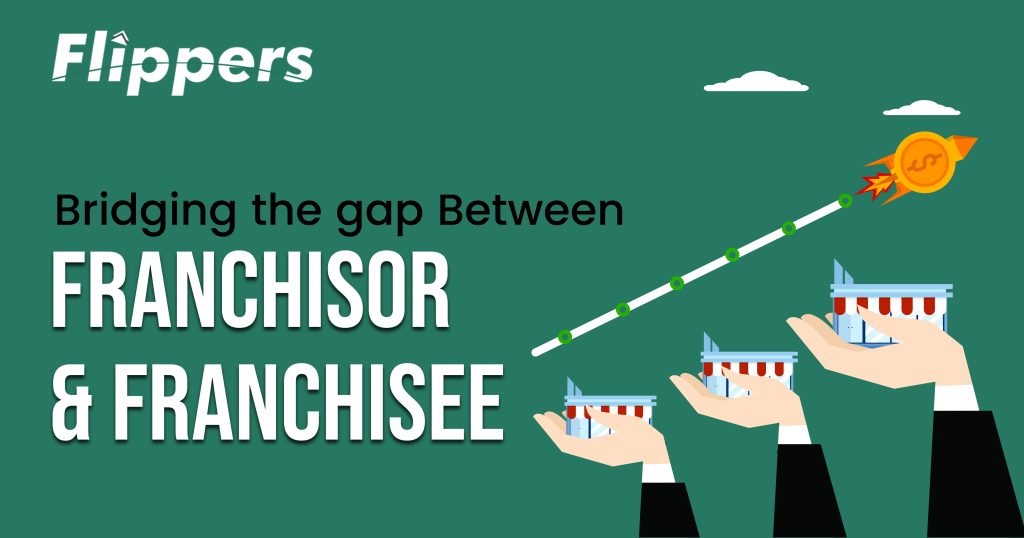Bridging the Gap Between Franchisor and Franchisee
In the world of franchising, two key players hold the reins: the franchisor and the franchisee. While they share a common goal “success” their paths often diverge in ways that can create gaps between them. Imagine going on a journey where both parties work hand-in-hand, turning challenges into opportunities for growth. By fostering collaboration, enhancing communication, and aligning goals, paves the way to shared success. It starts with understanding each party’s unique perspective.
Franchisee vs. Franchisor:
When diving into the world of franchising, it’s crucial to understand the roles of franchisees and franchisors. The franchisor is essentially the parent company. They create a proven business model, offer branding, and provide support to help their franchisees thrive. Think of them as the blueprint behind your favorite fast-food chain or retail store.
On the flip side, you have franchisees. These are individuals who buy into that established brand. They invest their money and time to run a local branch while adhering closely to the guidelines set by the franchisor. It’s like being part of a big family where each member has specific responsibilities but shares collective goals. The relationship between these two parties is vital for success. Franchisees rely on support from franchisors in areas like training and marketing while bringing local insight that helps adapt strategies effectively. Navigating this partnership requires mutual understanding and respect for each other’s roles in building a thriving business ecosystem together.
Effective Communication
Effective communication is the backbone of a successful franchising relationship. When franchisors and franchisees engage openly, it fosters trust and collaboration. This dialogue helps both parties understand each other’s needs, challenges, and goals. Regular check-ins can make a significant difference. Franchisors should schedule consistent meetings to discuss performance metrics and share best practices. These discussions help franchisees feel valued and heard while ensuring they stay aligned with brand standards. It also allows for immediate feedback on pressing issues.
Bridging the local marketing gap
Local marketing can sometimes feel like a game of telephone between franchisors and franchisees. Franchisees know their communities best. They understand what makes their customers tick. When both parties collaborate effectively, magic happens. Franchisors can offer tools and resources that empower franchisees to tailor marketing strategies to fit local tastes. For example, co-branded campaigns or localized social media ads resonate more deeply when they reflect community culture. Training programs focused on local market challenges also go a long way toward bridging gaps in understanding.
Bridging the Operational Efficiency
When it comes to bridging the operational efficiency differences between franchisors and franchisees, adopting a metafrontier approach can be transformative. This strategy helps identify best practices across different franchises, allowing both parties to learn from one another and implement effective solutions tailored to their unique circumstances. By embracing flexibility and encouraging innovation within the framework of established systems, both sides can enhance productivity and profitability. A culture that encourages feedback creates an atmosphere where everyone feels valued, leading to continuous improvement. When franchisors support their franchisees through training programs focused on operation optimization, they create a win-win scenario.
Clarifying Expectations Between Franchisors and Franchisees
Franchisors and franchisees must understand their roles clearly to foster mutual respect. Setting clear performance metrics helps in gauging success. Regular check-ins can facilitate ongoing adjustments based on those metrics. This proactive approach creates transparency in the partnership. Written agreements that detail obligations are vital too. These documents serve as reference points, reducing misunderstandings down the line. Encouraging feedback fosters an environment of collaboration. When both sides feel heard, trust builds naturally over time. A strong foundation paves the way for growth and innovation within the business model.
Brokerage Contribution to Franchise Success
Brokerage play a pivotal role in the world of franchising. Their expertise bridges gaps that often exist between franchisors and franchisees, ensuring smoother operations. A skilled broker understands both sides deeply. They help franchisees find opportunities that align with their goals while providing franchisors with candidates who fit their brand’s vision. Brokers offer valuable insights into market trends. This knowledge helps both parties make informed decisions about growth strategies and potential challenges. They also facilitate essential communication between stakeholders. Clear dialogue can prevent misunderstandings that may derail relationships or hinder progress. In addition to matchmaking, brokers provide ongoing support. They guide franchisees during the onboarding process and assist in navigating complex operational issues.
Aligning Business Goals for Franchisors and Franchisees
Aligning business goals between franchisors and franchisees is essential for mutual success. When both parties share a common vision, it creates a stronger foundation. Franchisors must understand the unique challenges that franchisees face in their local markets. This insight helps tailor support and resources effectively. On the flip side, franchisees should communicate their aspirations clearly. By expressing specific objectives, they can garner alignment with the broader company strategy. Regular meetings focused on goal-setting foster collaboration. These sessions can uncover shared interests and drive innovative solutions to challenges faced by both sides. Establishing key performance indicators (KPIs) enables tracking of progress toward these aligned goals. It ensures accountability while motivating each party to strive for excellence together.
Financial Transparency for both
Financial transparency is a vital part in bridging the gap between franchisors and franchisees. When both parties share accurate financial information, trust builds. Franchisors must provide detailed reports on fees, royalties, and overall profitability. Clear guidelines help franchisees understand what to expect financially. Regular financial reviews foster open discussions about performance metrics and growth opportunities. The more transparent each party is with their numbers, the better equipped they are to make informed decisions together. This openness not only eases potential tensions but also encourages a proactive approach to problem-solving within the network of franchises. It cultivates an environment where both sides feel valued in their partnership.
The Role of Brokerage Firms in Franchise Relations
Brokerage firms play a pivotal role in fostering healthy relationships between franchisors and franchisees. They act as intermediaries, bridging communication gaps that can often lead to misunderstandings. They offer valuable insights into industry trends and best practices. Their expertise helps both parties navigate the complexities of franchise agreements smoothly. They also provide ongoing support, addressing any concerns that arise during the partnership. Brokerage firms contribute significantly to creating a harmonious environment where both franchisor and franchisee can thrive together.
Conclusion:
The franchise landscape thrives on strong relationships between franchisors and franchisees. Effective collaboration can significantly enhance success for both parties involved. A brokerage firm stands out as a vital player in this dynamic. Brokerage firms serve as the bridge that connects franchisors and franchisees, ensuring alignment of goals and expectations. They facilitate open communication, reducing misunderstandings and fostering trust. With their expertise, these firms guide both sides towards financial transparency, helping to navigate potential pitfalls. At the end of the day, bridging this gap is about fostering collaboration rather than control.


